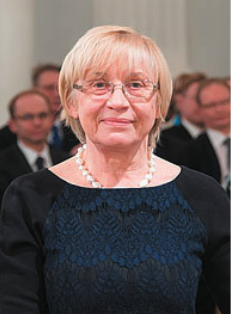Immigration as Fuel for Future Economic Growth? Attitudes of the Estonian Population towards Immigration
Increased international mobility of the labour force is a regular process that we should adapt to and handle within the common international rules in a way that would allow Estonia to achieve win-win results from the cross-border movement of labour force.
Cross-border movement of labour force does not mean only emigration from Estonia, but also people willing to come to work in Estonia, particularly when our economic development affords us better living standards. We must therefore overcome our so-called fear of immigrants in Estonia and promptly formulate the national vision and our wishes on the type of immigrants we would like to receive and on how we plan to integrate them. We should fidencouragement from the knowledge that numerous theoretical treatments as well as earlier empirical analyses have shown that international movement of labour force has not, as a rule, led to signifiant economic consequences neither for the country of origin, nor the country of destination. Of course, the consequences of migration processes manifest in different ways over time and depend on many country-specifi factors, such as the sociodemographic composition of the population, historical and cultural background, previously implemented socio-political measures, etc.
The focus of the article is on an analysis of the attitudes of the Estonian population towards immigration, with the aim of determining the factors that shape the attitudes towards immigrants and immigration. Awareness of these factors would help to better identify the measures that would allow for a better integration of the newcomers. Our studies have so far shown that in view of the possible effect of the immigrants on the national economy and culture, and the attractiveness of the area of residence, the Estonian population assesses immigration, by and large, at a level comparable to the other Estonian nations, even somewhat higher than certain Eastern European states, and signifiantly better than our big neighbour Russia. The Estonian population assesses the positive role of the immigrants on the cultural life even slightly higher than many other nations. The results of the analysis also show that the people who trust their country, as well as national and international institutions, are usually also more positive towards immigrants. This serves to confim again that immigration and integration policy measures must be shaped with full awareness of the composition of the population and the idiosyncrasies of the economic and historical development, but that measures must also be implemented to increase the trust of the population in the national as well as international institutions, and also in the stability of the socio-economic situation.
